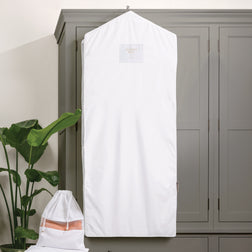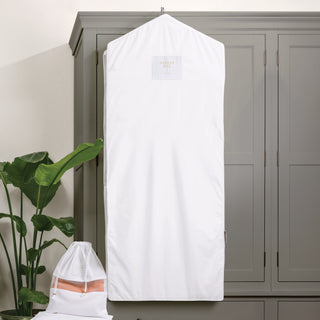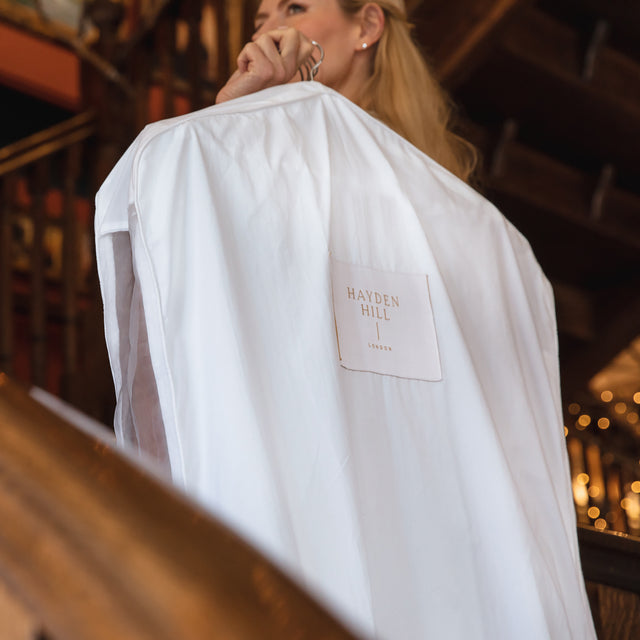When you have been doing your laundry for decades, it is common to sometimes ignore the manufacturer’s care label on a new item of clothing and simply launder it the way you usually do. And perhaps, many of us are in the habit of doing our laundry the way we were taught by our mothers, grandmothers, or other parental figures.
When you have been doing your laundry for decades, it is common to sometimes ignore the manufacturer’s care label on a new item of clothing and simply launder it the way you usually do. And perhaps, many of us are in the habit of doing our laundry the way we were taught by our mothers, grandmothers, or other parental figures.
But, it makes sense that the ones who know best how to launder an item of clothing properly are the ones who manufactured it.
That’s why we should all take a closer look at the labels in our clothing. Extending the lives of our favorite and most treasured pieces requires special attention and care.
How to Read Laundry Symbols
Laundry symbols are essential for properly caring for clothing and bath, bed, and table linens, as well as other household items. In order to avoid problems like shrinking and color runs, it’s crucial to be aware of what each symbol means.
The laundry symbols were created in collaboration with the International Organization for Standardization (ISO). Symbols were chosen instead of words to help consistently communicate information everywhere in the world. While there are slight differences in laundry symbols in a few European and Asian countries, the core shapes are fairly universal.
From selecting the correct washing machine cycle and water temperature to determining which clothing can bleached or should be dry-cleaned, this laundry symbols guide will walk you through all the symbols you need to know.
Is It Necessary to Accurately Follow the Symbols?
To achieve the best outcomes for their clothing, most manufacturers recommend the most conservative cleaning procedure. Some dry-clean-only fabrics, for example, can be hand-washed without causing harm to the garment.
This is why it is critical to note the fiber composition of the material so that you can make an educated laundry decision. To best care for your garments, become acquainted with the laundry symbols listed below.
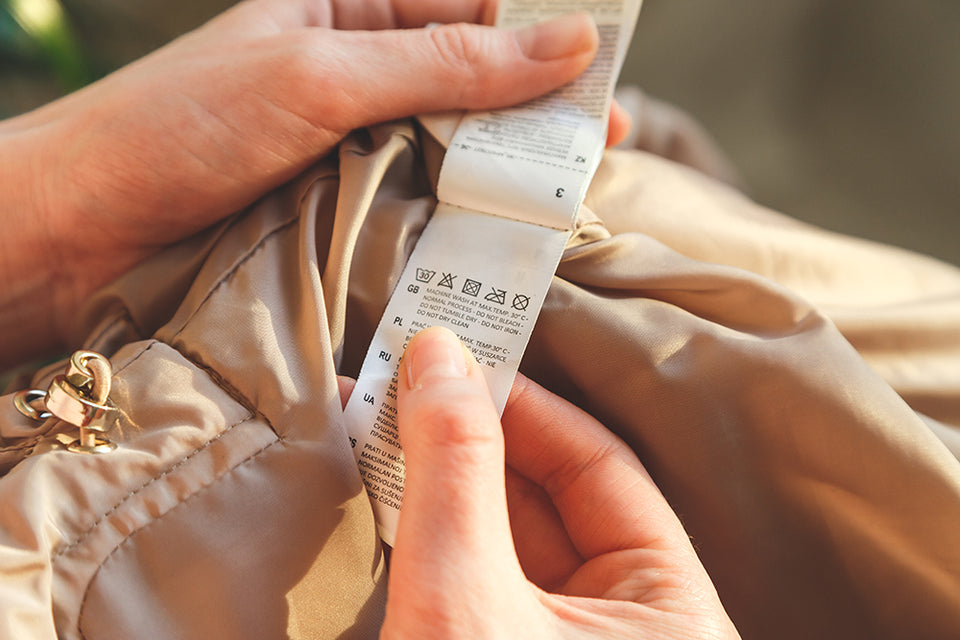
Washing Laundry Symbols
A small basin of water is the first symbol on a manufacturer’s care label, which is the symbol for washing instructions.
The number of dots in the symbol reflects the recommended water temperature. The more dots within the symbol, the warmer the water should be. The dots represent the temperature of the water in Celsius and Fahrenheit.
For example, a washing symbol with no lines or dots inside indicates that the clothing can be machine cleaned on a regular setting, using any detergent and the hottest water.
A single dot signifies that the clothing should be washed with cold water, with the temperature not surpassing 80°F or 26.67°C.
A two-dot washing symbol indicates that the clothing should be washed with warm water, no hotter than 105°F (40°C).
Three dots imply that the clothing should be washed with hot water, not surpassing 120°F or 50°C.
Four dots suggest a hot machine wash that does not exceed 140°F/60°C.
Five dots recommend a hot machine wash that does not exceed 160°F or 70°C.
Six dots signal for a hot machine wash, not surpassing 200°F or 95°C.
Occasionally, you may see a washing symbol with the number 30 inside, rather than dots. This indicates that the item should be washed in water no hotter than 86°F or 30°C.
Washing Machine Temperatures
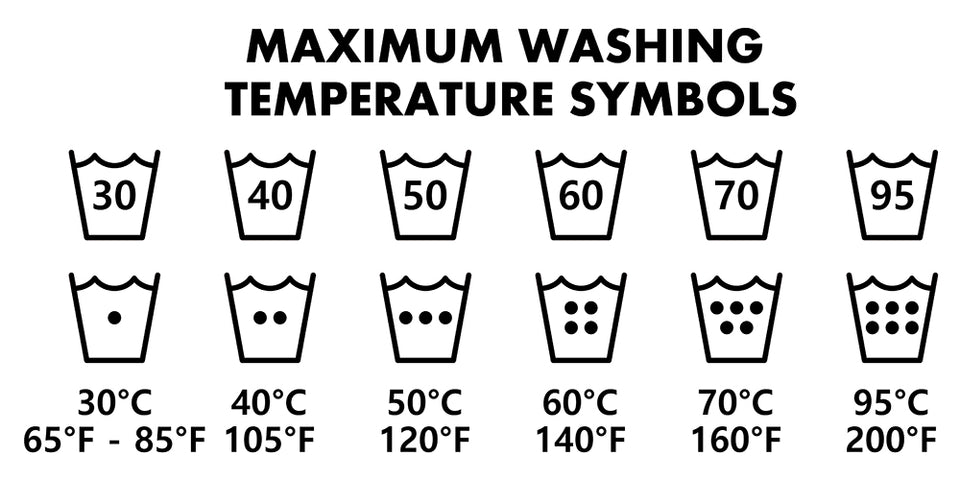
Though all of these symbols recommend specific water temperatures, it’s likely that your washing machine has general categories like cold, warm, and hot rather than specific temperatures.
- Cold water is approximately 60-80°F (16 to 27°C).
- Warm water is approximately 90 to 110°F (32 to 43°C).
- Hot water is around 130°F (54°C) or greater.
Use these values to choose the water temperature that matches the washing symbol on your garment’s label.
Washing Machine Settings
In addition to dots, washing symbols may also include lines underneath. A symbol with three lines suggests that the item should be washed on a gentle or delicate cycle. One line indicates a permanent press (also known as wrinkle control or casual cycles), and no lines mean a garment can be washed on a normal cycle.
Hand Wash Laundry Symbols
A symbol that depicts a hand over or in the water suggests that the clothes should be hand washed with mild detergent and water.
When you see the hand-washing symbol on an item’s care label, don’t risk ruining the garment by washing it in a washing machine. The hand wash symbols can save your clothes from unnecessary damage.
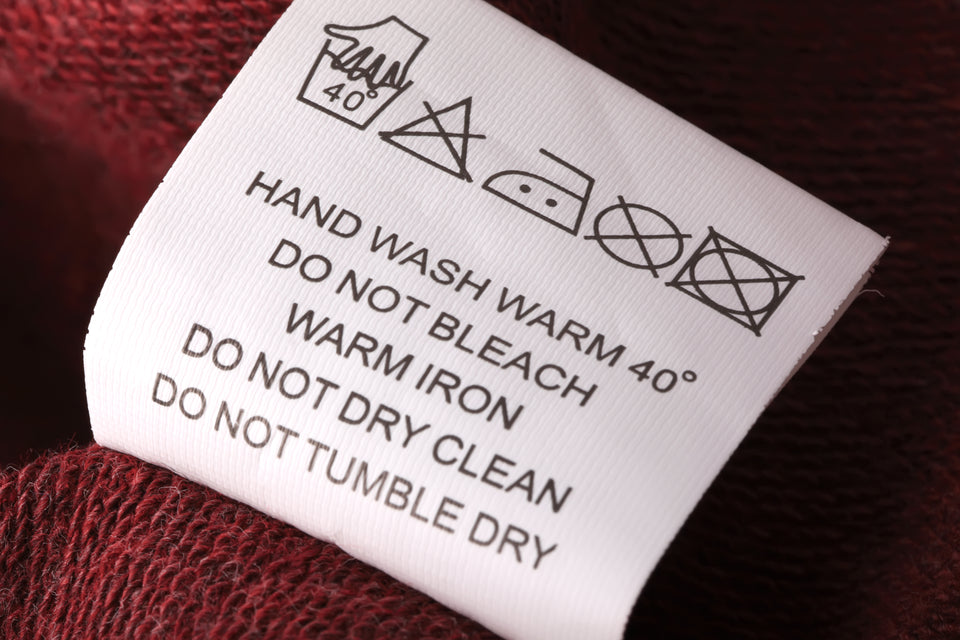
A crossed-out basin indicates that the clothing item should not be machine- or hand-washed and is frequently followed by dry-cleaning instructions.
Bleaching Laundry Symbols
According to Textile Industry Affairs, around 98% of all washable fabrics can be safely bleached, typically with color-safe or oxygen bleach. But, choosing the correct bleach for your garment is critical.
The bleach symbol is represented by a triangle on the manufacturer’s care label.
An empty triangle means that you can use any form of laundry bleach when needed.
A triangle with diagonal lines inside it denotes the use of only color-safe, non-chlorine bleach.
A crossed-out triangle indicates that no bleach should be used on that clothing item. The clothing is not colorfast, or the material is not bleach resistant.
If a clothing item’s label does not have a bleach symbol, it could mean that any type of bleach can be used. However, to reduce the chance of causing damage to the clothing without a bleach symbol, the American Cleaning Institute recommends performing a tiny patch test first.
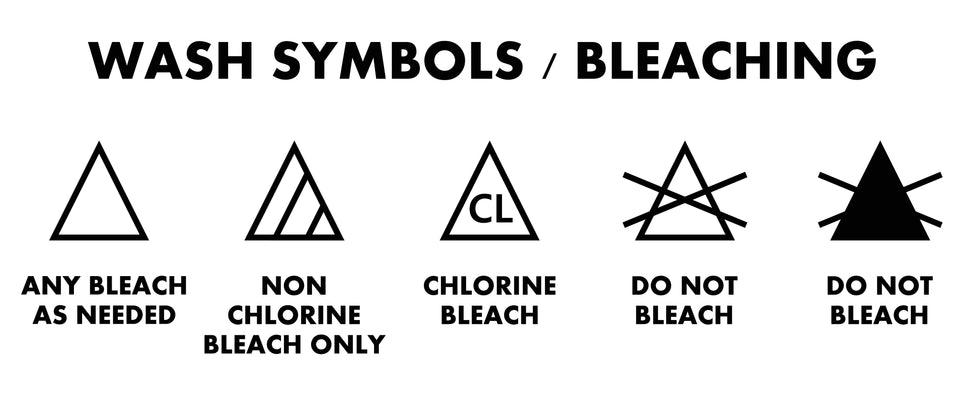
Drying Laundry Symbols
A square symbol represents drying instructions, both machine drying and air drying. The number of dots indicates the temperature that should be used, just like washing symbols.
The most common drying symbols include:
- A square with a circle and a single dot inside indicates you can tumble dry the item at a low temperature.
- A square with a circle and two dots inside indicates you can tumble dry the item on medium heat.
- A square with a circle and three dots inside indicates you can tumble dry the item on high heat.
- A square with a circle that has been completely filled in represents tumble drying with no heat.
Air drying symbols include a square with a semicircle at the top (line dry indoors or outdoors), a square with a horizontal line (lay flat to air dry), a square with two diagonal lines in the top corner (line dry away from direct sunlight), and a square with three vertical lines (line dry while dripping wet).

Ironing Laundry Symbols
Look for the iron symbol to help you choose a temperature setting and whether to use a dry or steam iron.
Let's take a closer look at the most common iron symbols.
- An iron symbol with no marks inside it implies that you can iron the garment at any temperature, with or without steam.
- An iron symbol with a single dot inside denotes ironing on a low setting (around 230°F/110°C), with or without steam.
- An iron symbol with two dots inside indicates a medium setting (around 300°F/150°C), with or without steam.
- An iron symbol with three dots inside indicates the item can be ironed on the highest setting (around 390°F/200°C), with or without steam.
- An iron symbol that is crossed out means the item should not be ironed.
- An iron symbol with water marks underneath means an item can be steam ironed. Conversely, if this iron symbol with water marks underneath is crossed out, the item should not be steam ironed.
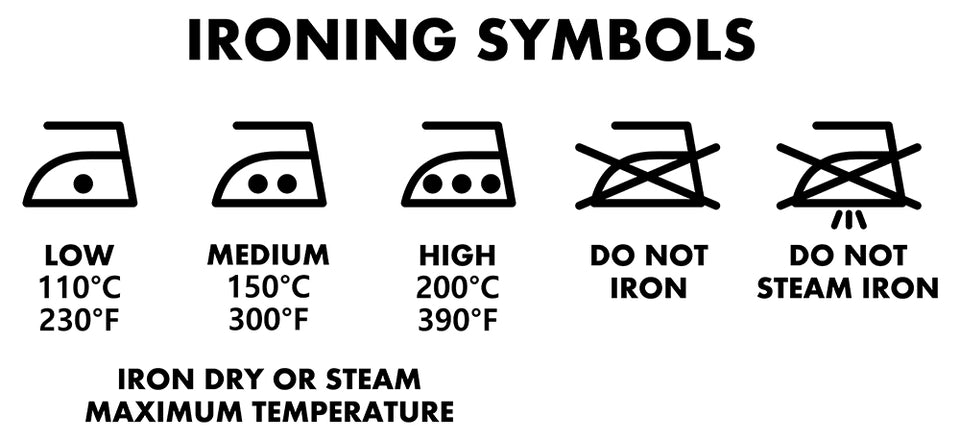
Dry-cleaning Laundry Symbols
Professional cleaners utilize dry-cleaning symbols to select the type of solvent to use, the amount of heat to use, how to best reduce moisture, the type of cycle to choose, or whether or not to use steam.
However, as a non-professional, it is only necessary to be familiar with two dry-cleaning symbols.
A blank circle means that the clothes should only be dry-cleaned.
A blank crossed-out circle means that the clothes should not be dry-cleaned.
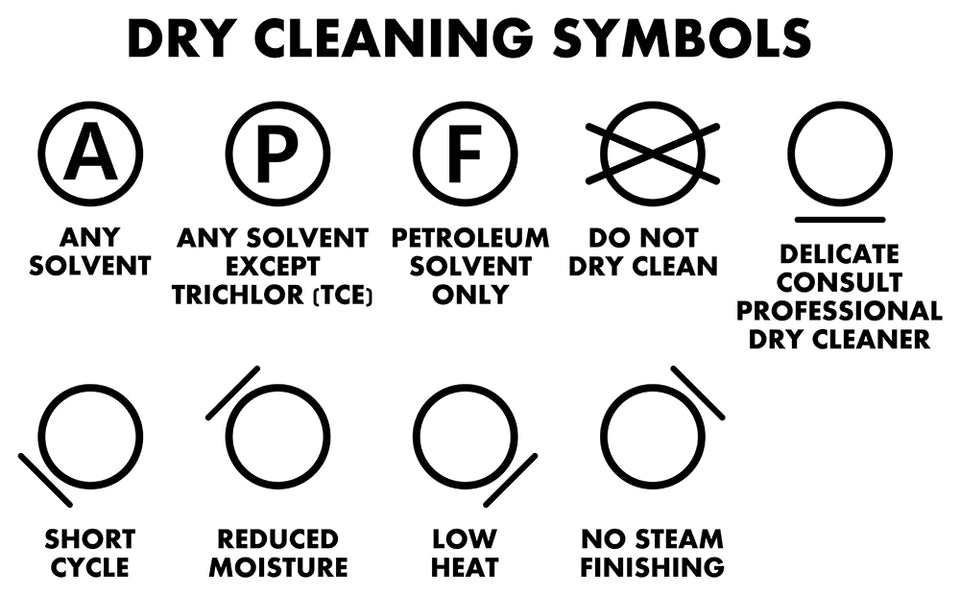
FAQs
How do you read laundry symbols?
Universal laundry symbols were developed to provide manufacturers, retailers, and consumers all over the world with one “language” for how to best care for their clothing. With the exception of a few European and Asian countries, these laundry symbols are consistent worldwide.
What do the symbols on the laundry tag mean?
All laundry symbols found on clothing care labels have different meanings and relate to different parts of the laundry process. An item’s laundry tag will contain instructions that will help you care for the garment properly, without risking damage, fading, discoloration, or shrinking.
What does 30 mean in laundry symbols?
A laundry symbol that includes the number 30 indicates how you should wash that specific clothing item, or specifically, what water temperature to use. The number 30 references washing the item in cold water at 30°C (86°F). A number 40 mark would indicate a warm water wash of 40°C/104°F, and a number 50 mark would indicate a hot water wash of 50°C/122°F.
Perhaps the easiest way to remember these laundry symbols is to put a chart of all the symbols and their meanings somewhere in your laundry room. And, when sorting laundry, create different piles based on how the item should be washed– the cycle, temperature, and method.
Though these steps may seem like extra work, they are necessary for helping your clothing last longer and helping you live a more sustainable lifestyle.

Hayden Hill is also deeply committed to sustainability. Our garment bags are made of 100% organic cotton certified through GOTS, which also guarantees the ethical treatment of workers. Hayden Hill delivers sustainable and beautiful garment care to preserve and protect the clothes you love most.

